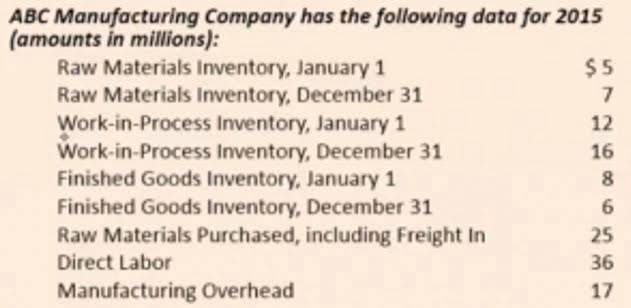
An unconsolidated subsidiary is a company that is owned by a parent company but whose individual financial statements are not included in the consolidated or combined financial statements of the parent company to which it belongs. Instead, an unconsolidated subsidiary appears in the consolidated financial statements of the parent as an investment. This usually applies when the parent company does not Law Firm Accounts Receivable Management have a controlling stake in the subsidiary.
Unconsolidated Undrained (UU) triaxial test

If the ownership stake is 20% or more (but less than 50%), the parent typically can exert some type of control over the subsidiary. In geotechnical engineering, triaxial tests provide design engineers with the data they need to calculate the effects of certain loads on their projects. By determining the shear strength of a soil or rock sample, we can work out how the ground beneath a foundation or embankment will respond to different loads – and the conditions under which it will experience shear failure. The unconsolidated statutes are also printed as pamphlet laws (P.L.) in the Laws of the General Assembly. Number of an act refers to the page number the act begins on in the Laws of the General Assembly.
- A print copy of the consolidated statutes is prepared by the Legislative Reference Bureau and is available at Jenkins.
- The consolidated financial statements consist of the income statement, Statement of Financial Position, Statement of Cash Flow, and Statement of Change in Equity.
- In the business environment, this type of arrangement does not exist, and regulatory guidelines require that affiliated companies consolidate their assets and financial statements.
- Clays undergo consolidation settlement not only by the action of external loads (surcharge loads) but also under its own weight or weight of soils that exist above the clay.
- He has authored articles since 2000, covering topics such as politics, technology and business.
- This is essential information for management teams, shareholders, investors, lenders and financial journalists.
Consolidated Vs Unconsolidated Financial Statements – (Key Differences)
Lawyers sometimes advise clients to sign a pre-nuptial agreement, or pre-nup, with their partners before marriage. Although it may make sense for newlyweds to share assets once they exchange vows, a couple signing a pre-nup agrees on who gets what in case of a divorce. In the business environment, this type of arrangement does not exist, and regulatory guidelines require that affiliated companies consolidate their assets and financial statements. This is especially true in saturated clays because their hydraulic conductivity is extremely low, and this causes the water to take an exceptionally long time to drain out of the soil. While drainage is occurring, the pore water pressure is greater than normal because it is carrying part of the applied stress (as opposed to the soil particles). Consolidated Financial Statements reflect the Financial Position, Performance, and Cash Flows of a ‘Parent Company’ and its ‘Subsidiary/(ies)’ as a SINGLE Economic Entity.

Liabilities
Unconsolidated Financial Statements show the Financial Position, Performance, and Cash Flows of a ‘Single Entity’, WITHOUT combining the financial results of its subsidiaries. In this case, the financial statements of the parent company and its subsidiaries are prepared separately, and the results are presented separately. Consolidated financial statements combine the finances of a parent company and contra asset account its subsidiaries, eliminating intra-group transactions, to present the group as a single entity.
- As a parent company, you may decide otherwise (for example, not preparing the consolidated balance sheet and letting the subsidiary company operate its own business).
- This stage involves unifying financial statements across divisions by compiling intercompany income statements, balance sheets, and cash flow statements into one coherent report.
- In this system, the spring represents the compressibility or the structure of the soil itself, and the water which fills the container represents the pore water in the soil.
- It also involves providing other quantitative summaries—like financial highlights and segment information—as well as qualitative context to make the presented figures easy to grasp.
- However, the consolidated balance sheet isn’t prepared by all companies; rather, companies with shares in other companies (subsidiaries) prepare a consolidated balance sheet.
To offset any differences and keep records aligned, the multinational consolidates all its divisions with a uniform 31 December reporting date. Per IFRS 10 stipulations, a company cannot “cherry pick” a performance indicator and must report it as is. This implies that a company reporting in a different period to offset the difference. It introduces several market risks the company is susceptible to due to some of its strategic decisions, from equity price risks to interest rate risks, foreign currency risks, and commodity price risks. This information is of utmost importance to investors and regulators alike as it reflects the firm’s overall financial strategy and risk exposure, increasing financial transparency. Not only does this information boost investor trust and empower stakeholders to make data-driven decisions, but it also keeps your company compliant with regulatory standards.

Subscribe for More Financial Insights
The High Plains aquifer is the most intensively pumped aquifer in North America. Companies typically consolidate financial statements quarterly, annually, or at the close of each fiscal period (whenever that is for them). So, in consolidating its finances, the firm segments its operations into three major categories—North America, International, and AWS—and pulls financial data from each one. It also converts all its foreign currency income to USD and ensures reporting period uniformity. For example, if a company owns 55% of another company, a minority interest will be added (in a similar proportion) in the equity section. Triaxial test data can be used to derive fundamental material properties, including internal friction angle, cohesion, dilatancy angle and stiffness.

If a public company wants to change from consolidated to unconsolidated, it may need to file a change request. Switching may also raise concerns with investors or usher in complications with auditors, so filing consolidated subsidiary financial statements is usually a long-term financial accounting decision. There are, however, some situations where a corporate structure change may call consolidated vs unconsolidated for a changing of consolidated financials, such as a spinoff or acquisition. It’s common for companies to do business with their subsidiaries – and subsidiaries to do business with each other – as if they were unrelated. An automaker, for example, might own the company that makes its transmissions, but it still pays that company for the transmissions it provides. Or if a subsidiary is struggling financially, its parent company may loan it money, with the expectation that it will be paid back with money from the subsidiary’s operations.
Both concepts are distinct — one refers to a process, whereas the other is the final result. A company that owns more than 50 percent equity in another firm must consolidate, or combine, its results with the subsidiary’s data. Consolidation also applies if the firm owns less than 50 percent but exerts significant influence over the way the subsidiary operates.